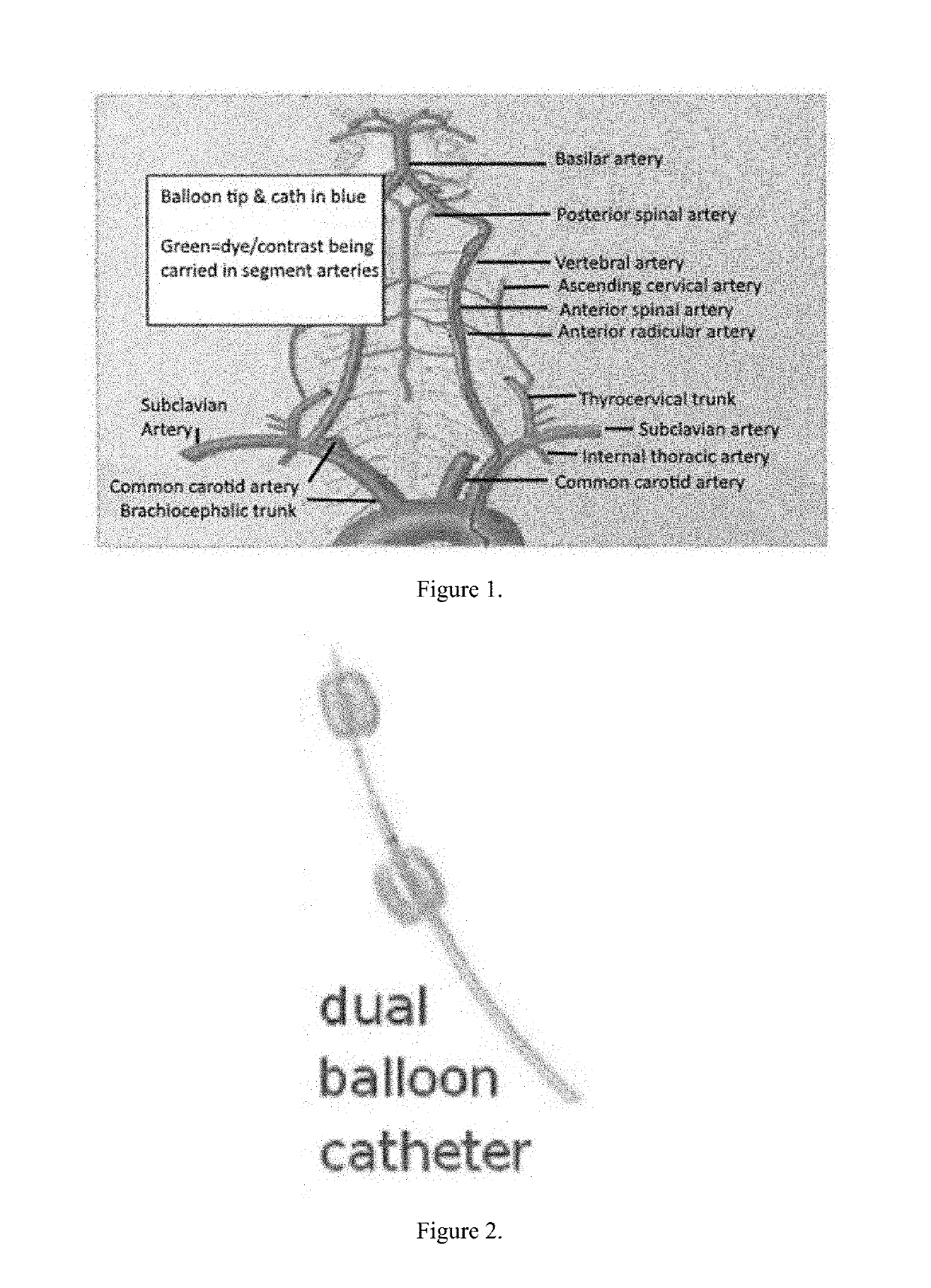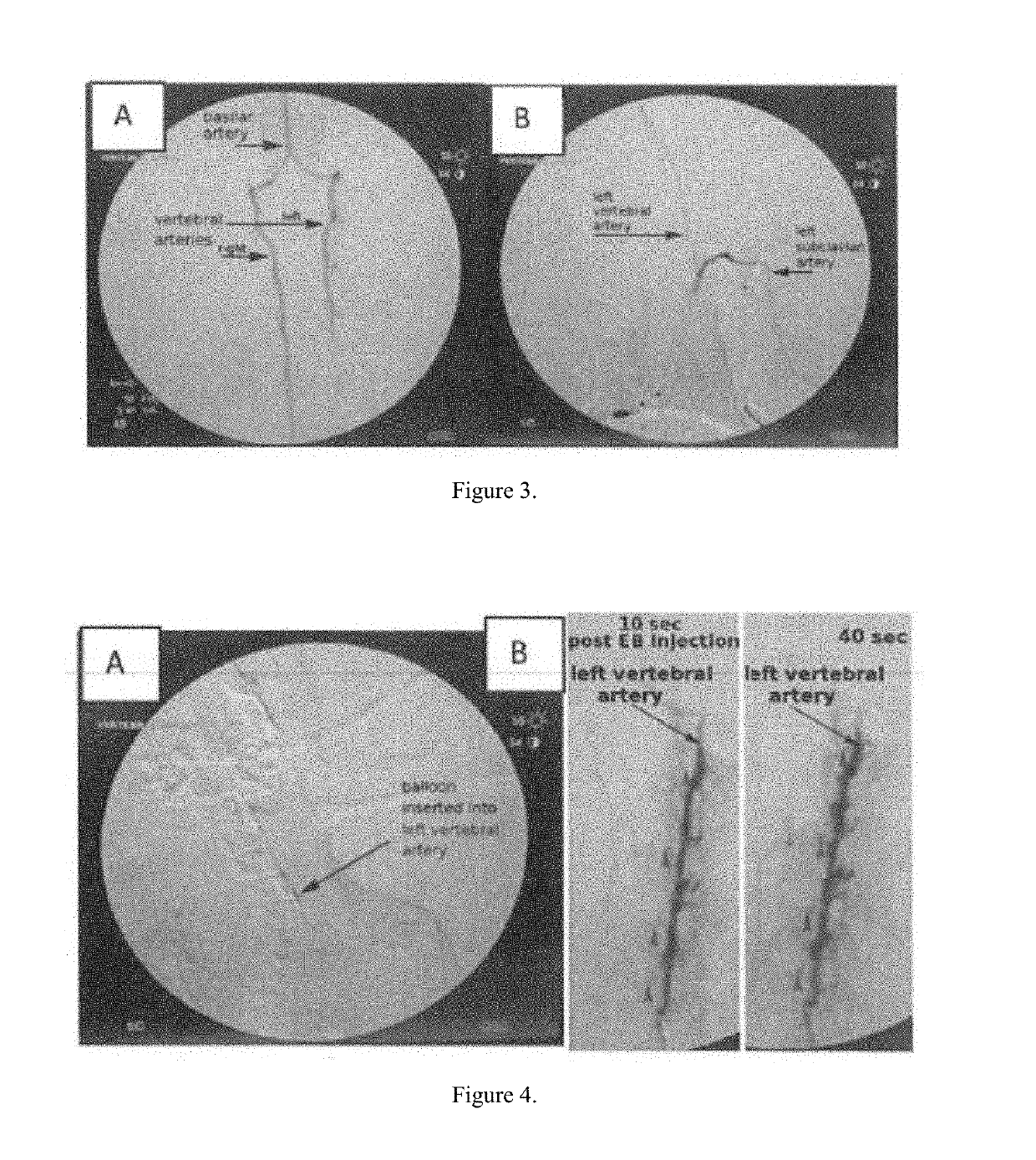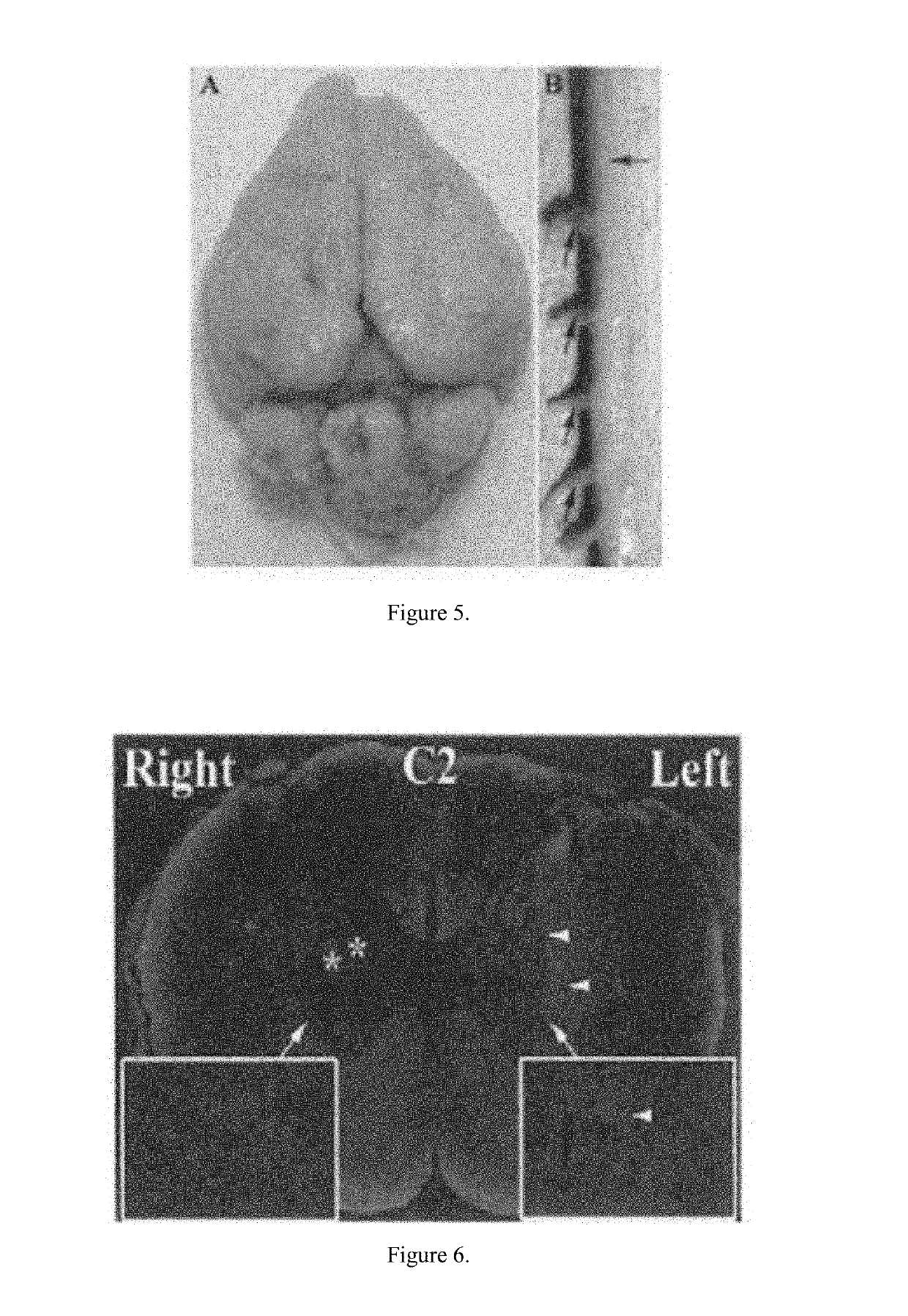Non-invasive method for direct delivery of therapeutics to the spinal cord in the treatment of spinal cord pathology
a pathology and non-invasive technology, applied in the field of neurologic diseases, can solve the problems of significant limitations due to cell migration to cns tissue, specifically in the spinal cord, and the likelihood of deleterious influence of cell distribution
- Summary
- Abstract
- Description
- Claims
- Application Information
AI Technical Summary
Benefits of technology
Problems solved by technology
Method used
Image
Examples
example 1
[0031]The rabbits were anesthetized. A dual balloon catheter was inserted into the common femoral artery via percutaneous micropuncture and guided up the femoral artery into the iliac artery, into the descending aorta, and into the carotid artery using ultrasound. A 4-F sheath (COOK Medical, Bloomington, Ind.) was placed, and the catheter inserted. A fluoroscopic imaging device (OEC 9000 Elite Mobile C-arm Imaging System, GE Healthcare, Buckinghamshire, UK) was used to visualize a guide wire, which was advanced through the abdominal and thoracic aortae and selectively placed in the vertebral artery, as seen in FIG. 1. Upon placement of the guide wire, a 2.5F CXI microcatheter (COOK) was placed for diagnostic imaging to delineate the segmental spinal cord perfusion. The 2.5F catheter was exchanged for a 4F multiport isolation-infusion catheter with dual balloons spaced 4 cm apart and infusion holes between the balloons (Vascular Designs, Inc., San Jose, Calif.), as seen in FIG. 2. Th...
PUM
 Login to View More
Login to View More Abstract
Description
Claims
Application Information
 Login to View More
Login to View More - R&D
- Intellectual Property
- Life Sciences
- Materials
- Tech Scout
- Unparalleled Data Quality
- Higher Quality Content
- 60% Fewer Hallucinations
Browse by: Latest US Patents, China's latest patents, Technical Efficacy Thesaurus, Application Domain, Technology Topic, Popular Technical Reports.
© 2025 PatSnap. All rights reserved.Legal|Privacy policy|Modern Slavery Act Transparency Statement|Sitemap|About US| Contact US: help@patsnap.com



